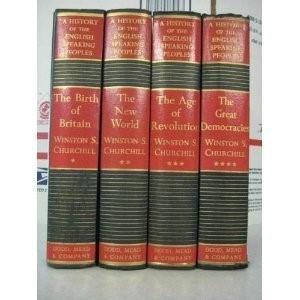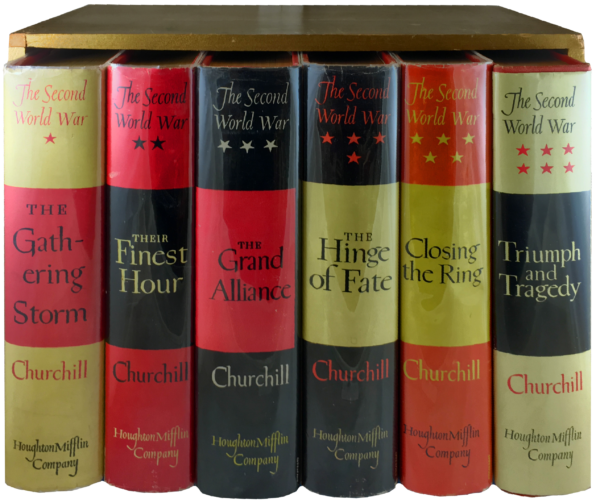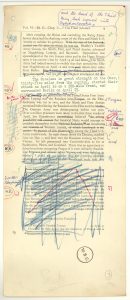
Man of Words
After the Second World War

The Second World War by Winston Churchill
August 18, 2021
Shortly after his return from Fulton in 1946, Churchill began to write his war memoirs. With a team of researchers beavering away on his behalf, he had a very ordered (if somewhat laborious) approach to drafting and editing. He would pull together all his documents (or get his researchers to pull them together) – minutes, telegrams, letters – and then would track down material from other sources, too. Churchill would then begin to draft the text which would link all the documents together, dictating to a team of secretaries, often late into the night. Just as he did with all his speeches, he’d check drafts, check proofs, marking them up at each stage with copious corrections, determined to get the right word, the right phrase. Despite such a laborious process (or perhaps because of it), The Second World War appeared relatively quickly, in six volumes, between 1948 and 1954. Churchill never claimed the memoirs were ‘history’; they were rather a contribution to history. Although their very breadth and coverage gave the impression that they were a definitive account, there were omissions, of course. The Second World War was Churchill’s interpretation of the events, the work of a man seeking to place his role in the war – and in history. The books sold well, with a combined first printing of over 800,000 copies.
Subscribe
WANT MORE?
Get the Churchill Bulletin delivered to your inbox once a month.




